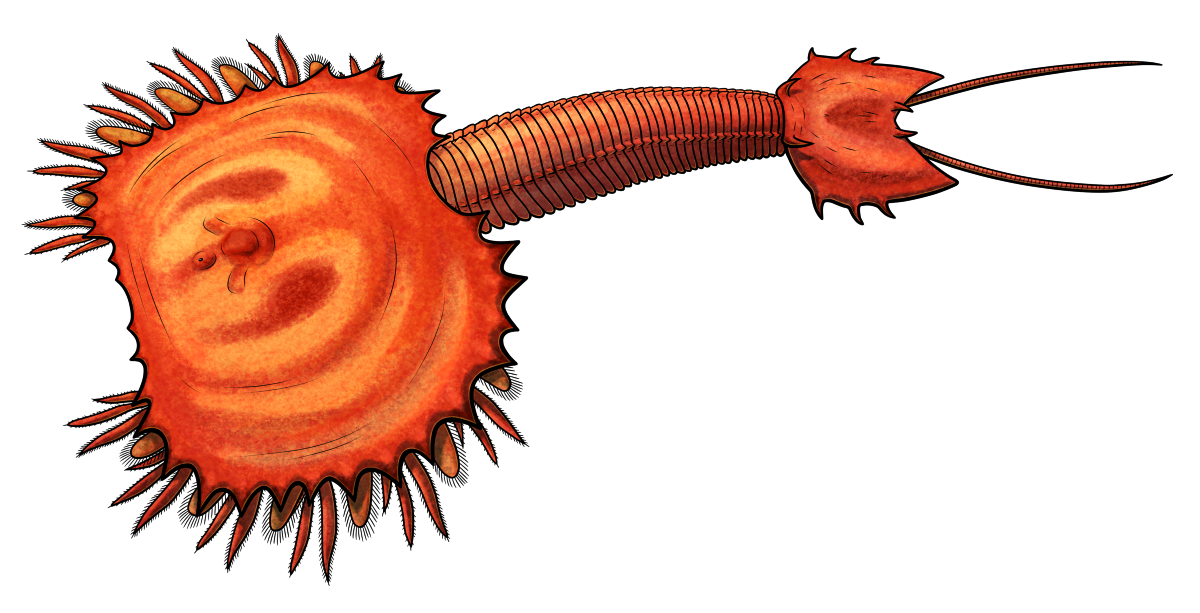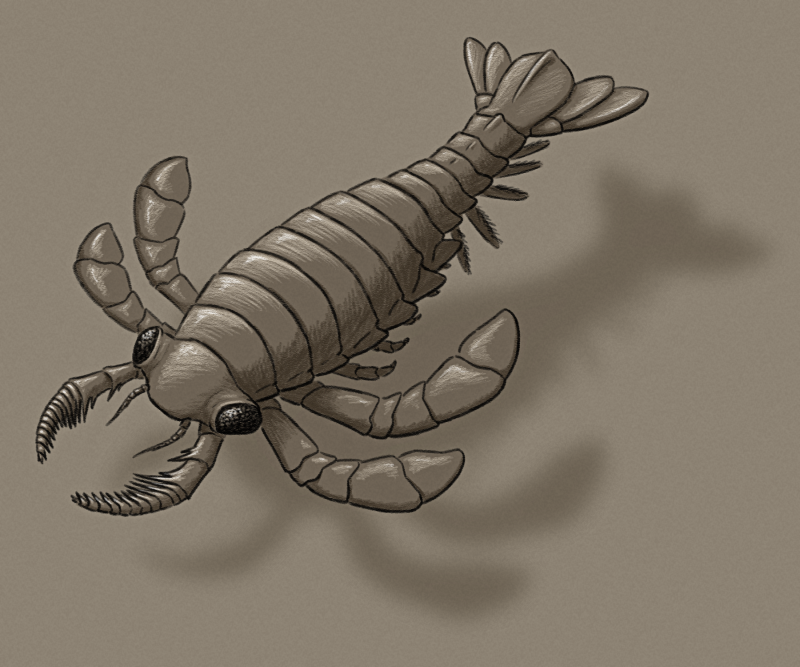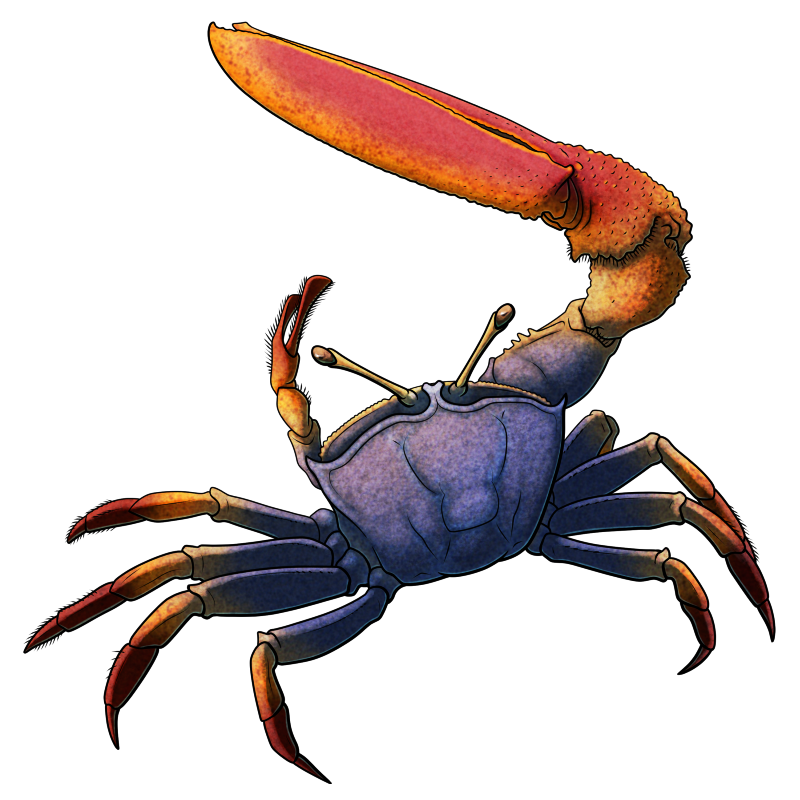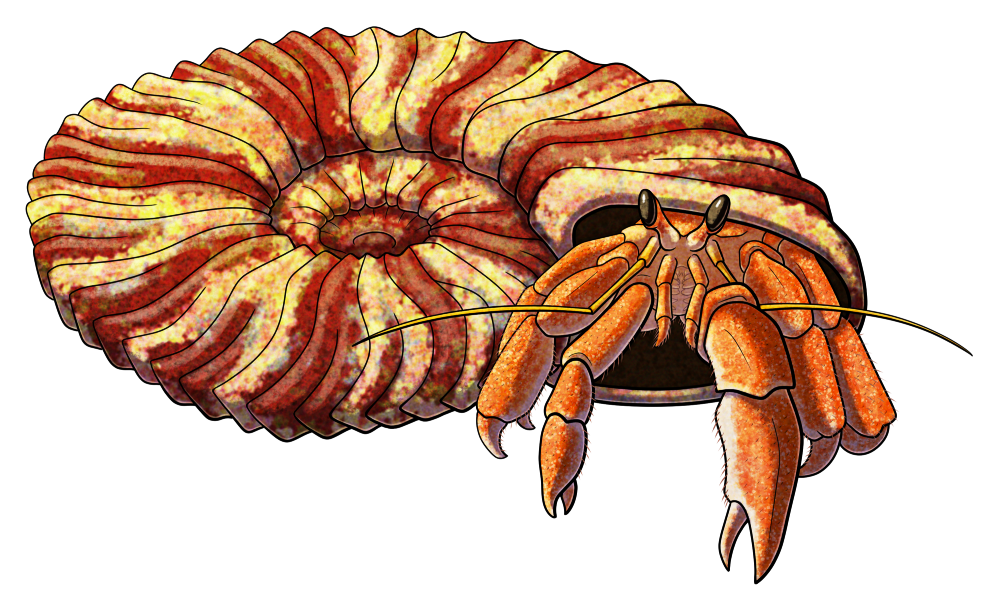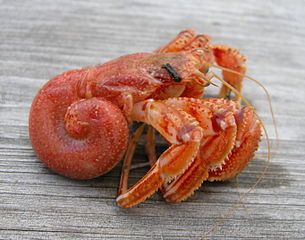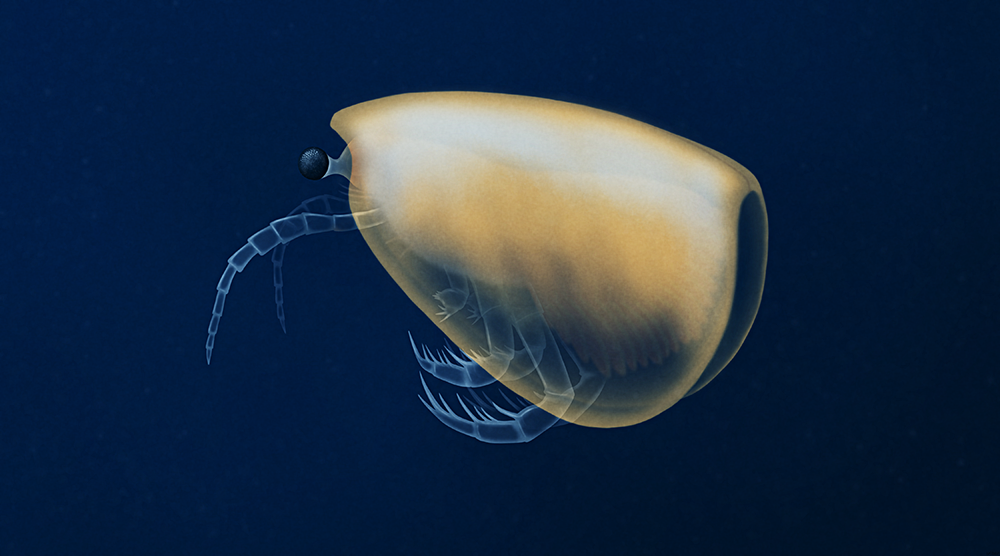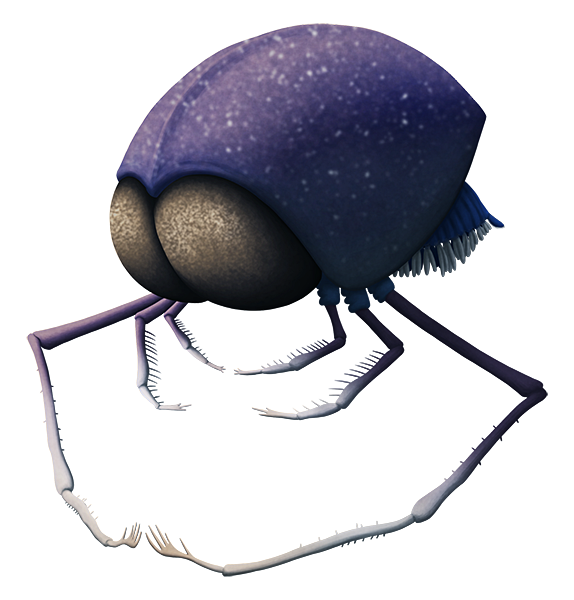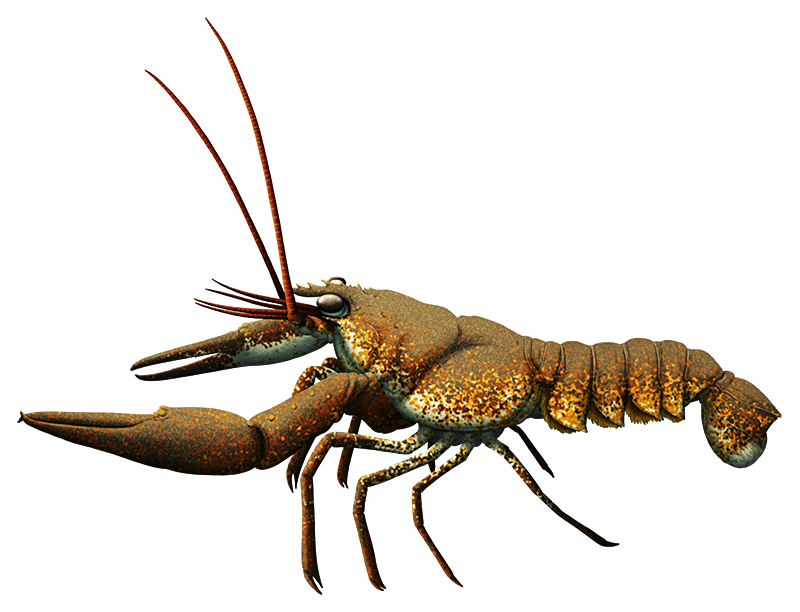Panacanthocaris ketmenica* here was a member of an extinct group of crustaceans known as kazacharthrans – close relatives of modern tadpole shrimp known mainly from Central Asia during the mid-to-late Triassic (but with possible German relatives from both the late Triassic and further back in the late Paleozoic).
Fossils of Panacanthocaris have been found in Kazakhstan and northwest China, dating to about 235-221 million years ago. It was fairly big compared to most of its modern cousins, reaching at least 10cm in length (~4″), and had distinctive spines around the edges of its carapace and its telson.
It’s not clear if it had eyes – there’s a single opening near the front of its carapace that may have housed some, and so I’ve depicted it here with just one naupliar eye similar to the “third eye” of tadpole shrimp.
It probably had a fairly similar lifestyle to its modern relatives, living in shallow freshwater and temporary pools and opportunistically feeding on everything from algae to smaller aquatic animals.
(* Sometimes also called P. ketmenia. May also be the same thing as Iliella spinosa, but until that paper is officially published the current name still stands.)

